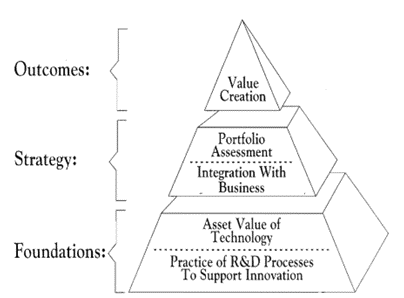“You can’t manage what you can’t measure.”
–Peter Drucker
The field of innovation metrics is very active. Long gone are the days when the innovation leader could say, “Give us money and good things will happen.”
Whatever the system of metrics used, the importance of external partnerships in the research strategies of corporate entities is well documented. In a recent survey of corporate entities on by the Innovation Research Interchange (IRI) more than 75% of responding companies see universities as key in development of new products. Furthermore, more than half of these same respondents expect to increase external spend and over a third measure external spend as part of their standard innovation metrics.
Having a set of credible metrics that can be used to both monitor progress and demonstrate value is an essential element of an external collaboration, particularly strategic alliances that involve multiple projects over an extended time frame.
“All models are wrong, but some are useful.”
-George Box
I have found one should balance breadth of metrics with the effort involved in maintaining the system. When considering breadth and appropriateness of metrics, the Technology Value Pyramid (TVP) is very useful. Innovation managers working under the auspices of IRI created TVP.
TVP looks at metrics along three primary domains:
1) value creation (the tip of the pyramid),
2) strategic alignment further segmented into portfolio and business alignment (the center), and
3) foundations subdivided into technology asset value and practice of R&D processes to support innovation (the base of the pyramid).

Getting started:
A critical first step is developing an initial system early in the partnership with the understanding that it will not be perfect. A few questions to consider when developing metrics are:
- What is the nature of the project?
- Underpinning development of new technology,
- development of technology and products that can be directly deployed commercially
- What is the expected business impact and on what time horizon?
- Immediate/Short-term (1-3 years),
- medium-term (3-5 years)
- longer term (5+ years)
- What are the expected outputs?
- Samples/prototypes,
- knowledge transferred via reports and publications,
- patents or related IP
- What other beneficial outcomes will result?
- Hiring of skilled personnel
- Enhancement of corporate image
- Synergies from collaboration such as additional external funding via government grants, additional partnerships, philanthropy
For strategic partnerships you should further consider shared interests that can be reflected in shared metrics, and unique (but hopefully aligned) interests of the individual parties. Once you’ve asked and answered these questions, set about choosing a reasonable breadth of indicators of progress for at the appropriate levels of TVP.
Regardless of the system of metrics used, recognize that this is a fluid system and should be adjusted with experience. Metrics, as with models, are inherently flawed, but if done correctly, can be useful.

Stewart Witzeman
UI Collab Consultant
